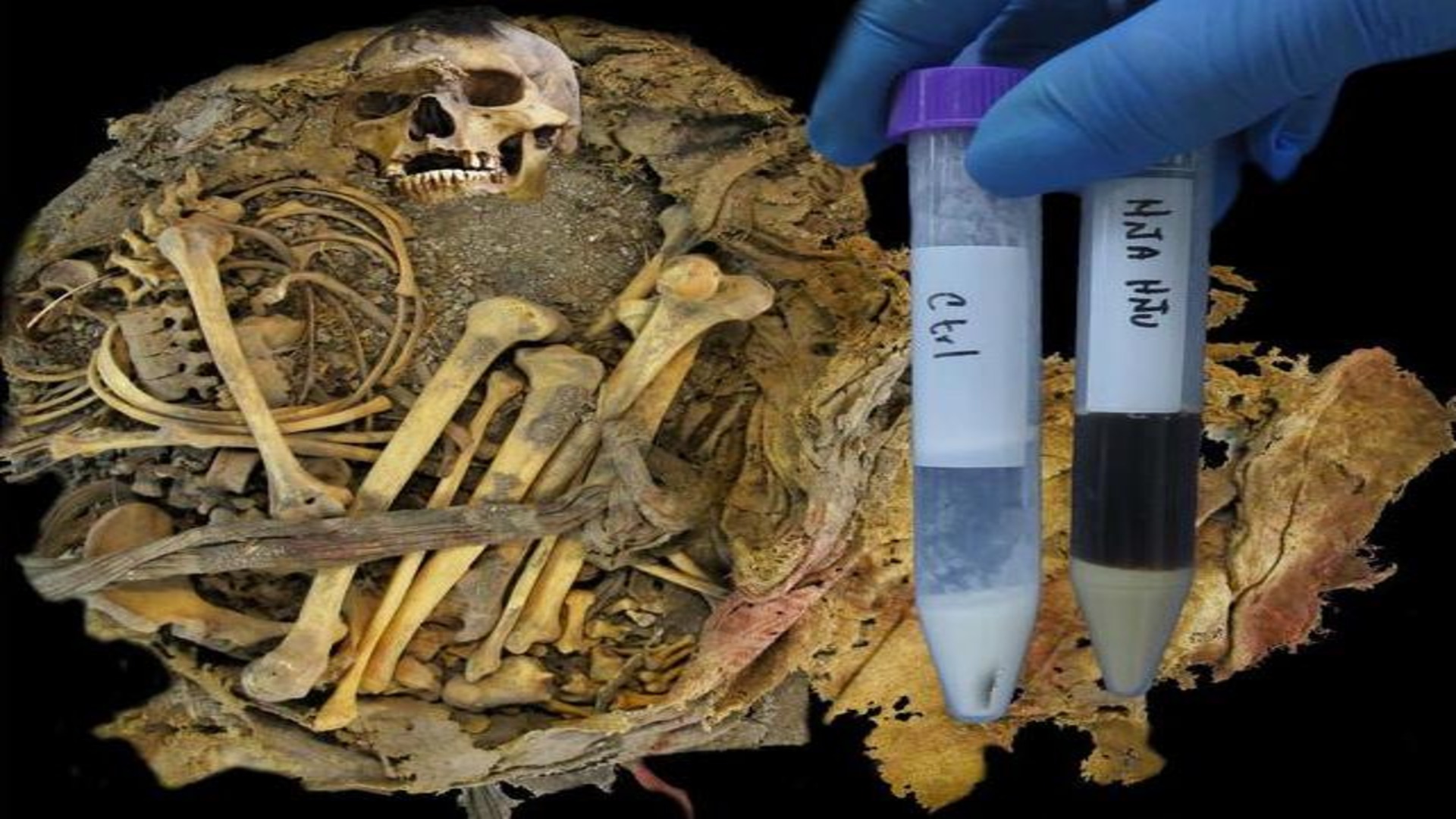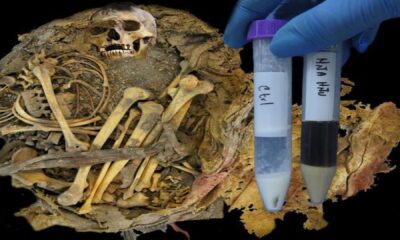Science
Ancient Microbiome Discovered in 1,000-Year-Old Remains from Mexico

Researchers have uncovered remarkable insights into the ancient human gut microbiome through the well-preserved remains of a 1,000-year-old individual, dubbed the Zimapán man. Discovered in a cave in central Mexico, these remains offer an unprecedented view of the microbiome of a person who likely held significant status within the extinct Otopame culture.
The discovery was made in a rock shelter located in El Saucillo, Zimapán, Hidalgo, where the environmental conditions facilitated natural mummification. According to a press release, the individual was found wrapped in an elaborate funerary bundle, indicating his prominence in society.
Revolutionary Findings from Ancient Gut
The study of these remains, published in the journal PLOS One, reveals crucial details about the types of bacteria that resided in the Zimapán man’s gut. Researchers led by Santiago Rosas-Plaza from the National Autonomous University of Mexico utilized advanced techniques, including 16S rRNA gene sequencing, to analyze the intestinal tissue and preserved feces. Their findings uncovered a diverse range of bacteria, including families such as Peptostreptococcaceae, Enterobacteriaceae, and Enterococcaceae, which have long been known to coexist with humans.
What stands out in this research is the identification of Romboutsia hominis, a bacterium previously unseen in ancient microbiomes. This discovery marks a significant milestone in the study of microbial evolution and provides new avenues for understanding human health in historical contexts.
Insights into Ancient Culture and Preservation Techniques
The findings not only shed light on the man’s microbiome but also enhance understanding of the cultural practices of the Otopame people. The individual, estimated to have died between the ages of 21 and 35, was buried in layers of maguey fiber mats and woven cotton. This intricate burial practice suggests a well-structured society with complex rituals surrounding death.
As noted by the researchers, the careful arrangement of the burial materials highlights the Zimapán culture’s intelligence in body preservation. The study emphasizes the importance of integrating anthropological, archaeological, and microbiome data to unravel human evolution and its relationship with various environments.
Master Luisa Mainauo, who oversees the restoration of the mortuary bundle, has dedicated nearly eight years to this project. Her work aims to showcase these findings not only to the people of Mexico but to a global audience, reflecting the significance of this ancient culture.
The discovery of the Zimapán man’s remains and the insights gained from his microbiome provide a compelling link to the past, offering valuable clues about human health and ancient lifestyles. As researchers continue to explore these ancient samples, they contribute to a deeper understanding of our evolutionary history and the intricate web of life that has shaped human existence.
For further details, the complete study is available in PLOS One.
-

 Technology5 months ago
Technology5 months agoDiscover the Top 10 Calorie Counting Apps of 2025
-

 Technology2 weeks ago
Technology2 weeks agoOpenAI to Implement Age Verification for ChatGPT by December 2025
-

 Health3 months ago
Health3 months agoBella Hadid Shares Health Update After Treatment for Lyme Disease
-

 Health3 months ago
Health3 months agoAnalysts Project Stronger Growth for Apple’s iPhone 17 Lineup
-

 Health3 months ago
Health3 months agoErin Bates Shares Recovery Update Following Sepsis Complications
-

 Technology5 months ago
Technology5 months agoDiscover How to Reverse Image Search Using ChatGPT Effortlessly
-

 Technology3 months ago
Technology3 months agoElectric Moto Influencer Surronster Arrested in Tijuana
-

 Technology2 months ago
Technology2 months agoDiscover 2025’s Top GPUs for Exceptional 4K Gaming Performance
-

 Technology5 months ago
Technology5 months agoMeta Initiates $60B AI Data Center Expansion, Starting in Ohio
-

 Technology5 months ago
Technology5 months agoRecovering a Suspended TikTok Account: A Step-by-Step Guide
-

 Health5 months ago
Health5 months agoTested: Rab Firewall Mountain Jacket Survives Harsh Conditions
-

 Lifestyle5 months ago
Lifestyle5 months agoBelton Family Reunites After Daughter Survives Hill Country Floods

















